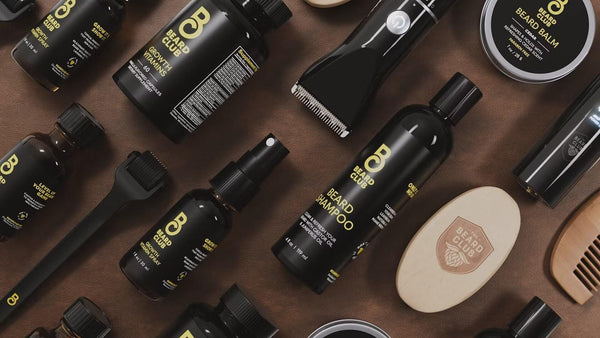Designing Effective Wrap-Around Labels for Maximum Impact
Table of Contents
- Key Highlights
- Introduction
- Understanding the Importance of Wrap-Around Labelling
- Key Design Considerations
- Maximizing Branding and Messaging
- Incorporating Functional Features
- Sustainability Considerations
- Final Thoughts
- FAQ
Key Highlights
- Wrap-around labels provide a unique 360-degree branding opportunity that enhances product visibility and consumer engagement.
- Effective design principles include aesthetic harmony, readability, consistent visual hierarchy, and incorporating functional elements like QR codes.
- Sustainability is increasingly vital in wrap-around label design, emphasizing recyclable and eco-friendly materials.
- A strategic approach to labeling can transform packaging into an effective marketing tool that communicates brand identity clearly.
Introduction
Imagine standing in a grocery store, surrounded by numerous options for the same product. What catches your eye? Often, it’s the packaging—a creative label that not only provides essential information but tells a story. In an era where consumers are bombarded with choices, the role of packaging has evolved dramatically. Among various strategies, wrap-around labels have emerged as a powerful instrument that can maximize visual impact and branding. These labels, particularly suited for round containers, fully encircle the product, offering brands the unique chance to present their identity from all angles.
This article delves into the design principles of effective wrap-around labels: why they matter, what elements contribute to their success, and how they can significantly impact consumer behavior and brand communication in today’s competitive market.
Understanding the Importance of Wrap-Around Labelling
Wrap-around labels stand out because they extend beyond mere identification, creating a continuous visual experience. This labelling technique allows brands not just to display information but to envelop the consumer in their narrative—fostering a connection that taps into emotional resonance.
Increasing Visibility
One of the most significant advantages of wrap-around labels is their ability to capture attention. With a 360-degree view, these labels can showcase branding elements and marketing messages effectively. As consumers rotate a product to examine it, they are continuously engaged, bringing the brand message full circle—literally. This heightened visibility translates to a higher likelihood of purchase, especially in retail environments where shelf space is valuable.
Space for Creativity
The surface area provided by wrap-around labels is not merely functional; it is an opportunity to display artistic design elements that align with brand identity. Companies can use this space not only for basic product information but also to tell a story or convey a brand ethos. However, the increased surface area comes with challenges; excessive content can lead to consumer overwhelm, while the absence of sufficient information fails to provide clarity.
Key Design Considerations
When creating impactful wrap-around labels, several design considerations need to be addressed:
Aesthetics and Cohesion
The foundation of any successful design lies in aesthetic appeal and brand coherence. Labels must harmonize with brand colors, iconography, and typography to establish a relatable identity for the target audience.
- Color: Color selection must be deliberate, chosen to induce desired feelings or associations—think freshness for organic products or sophistication for luxury items.
- Fonts: The choice of typeface reflects brand personality. A whimsical brand may opt for playful fonts, while a serious brand might choose a clean, professional typeface.
Readability
Regardless of how stunning a design may be, it must always prioritize readability. According to consumer behavior studies, shoppers make decisions in seconds. Therefore, ensuring that key information is prominent and easily legible is crucial.
- Font Size and Contrast: Text needs enough contrast against the background for easy reading. Too many font styles can create confusion—simplicity is paramount.
- Information Clarity: Brands should avoid clutter. Utilizing well-defined sections helps organize information, guiding the consumer's eyes comfortably across the label.
Visual Hierarchy
Visual hierarchy involves arranging text and images in a way that guides the viewer's understanding. The main product information—like the name and brand—should be positioned prominently, while secondary details follow in an organized manner.
- Placement: Core information can effectively be placed in the upper or central part of the label, drawing attention first, followed by supporting data below.
Maximizing Branding and Messaging
The challenge of utilizing wrap-around labels lies in effectively communicating both branding and product information without overwhelming the consumer.
Front and Reverse Design
The front of the label is critical in conveying essential product messages. The product type, benefits, and brand logo should be displayed prominently to achieve immediate recognition.
On the reverse side, more detailed information, like usage instructions or ingredient lists, can be included. The key is to ensure that no matter which side a consumer looks at, they find relevant and engaging content.
Storytelling Through Design
Packaging is more than a protective shell—it can narrate a brand’s story. Companies can utilize wrap-around labels for storytelling by weaving the narrative of the product’s origin or its mission directly into the design.
For instance, sustainable brands might include graphics or key phrases that emphasize ethical sourcing. This approach enhances brand loyalty by reflecting values that resonate with consumers.
Incorporating Functional Features
While aesthetics are paramount, integrating functional features is equally essential in contemporary wrap-around label design.
QR Codes
In an increasingly digital world, QR codes can offer additional layers of interaction. By scanning a QR code, consumers can access product information, exclusive promotions, or even sustainability practices behind the product’s creation. This added value can strengthen customer relationships and increase trust.
Nutritional Information and Barcodes
For food and beverage products, legal requirements may mandate specific information, such as nutritional data or barcodes. Incorporating these elements smoothly into the wrap-around label without sacrificing design aesthetics represents a challenge for designers.
Sustainability Considerations
As environmental awareness rises, the demand for sustainable practices extends into packaging. Wrap-around labels offer the opportunity to use eco-friendly materials, appealing to socially-conscious consumers.
Eco-Friendly Materials
Brands can opt for recyclable or biodegradable materials to create their labels, showing commitment to sustainability. Not only does this reduce environmental impact, but it can also attract customers who prioritize responsible purchasing.
- Renewable Resources: The use of inks and adhesives made from renewable sources can further minimize the ecological footprint.
- Consumer Preferences: Studies suggest that consumers often prefer brands that demonstrate a commitment to environmentally friendly practices, reflecting a growing trend in ethical consumerism.
Final Thoughts
The development of effective wrap-around labels demands a harmonious blend of creativity, branding, functionality, and sustainability. Crafting labels that engage consumers visually while delivering clear messages creates a unique marketing tool that extends far beyond traditional packaging.
The success of wrap-around labelling relies on understanding consumer behavior—recognizing that every detail of the label contributes to the product's story and influences purchasing decisions. As brands strive to stand out in a crowded marketplace, well-designed wrap-around labels provide a competitive edge, fostering long-term customer loyalty and driving sales.
FAQ
What are wrap-around labels?
Wrap-around labels are designed to encircle products, providing a 360-degree view of the brand and information.
Why are aesthetics important in label design?
Aesthetics attract consumers and convey brand identity, significantly influencing purchasing decisions.
How can QR codes be utilized on labels?
QR codes on labels can link to additional product information or promotional content, enhancing customer interaction.
What are sustainable packaging materials?
Sustainable materials are those that can be recycled, reused, or are made from biodegradable resources, reducing environmental impact.
How can brands measure the effectiveness of their labels?
Through consumer feedback, sales data, and market research, brands can assess how well their labels perform in attracting and informing customers.
POWER your ecommerce with our weekly insights and updates!
Stay aligned on what's happening in the commerce world
Email Address
Handpicked for You

08 September 2025 / Blog
How to Avoid Greenwashing: Rules, Real-World Examples, and a Practical Playbook for Honest Environmental Claims
Read more
08 September 2025 / Blog
Klaviyo 2025: How its AI-Driven CRM Transforms Shopify Email Marketing and the Customer Experience
Read more
08 September 2025 / Blog


